Donate now to support the LLIFLE projects.
Your support is critical to our success.
Your support is critical to our success.
Accepted Scientific Name: Eriosyce kunzei (C.F.Först.) Katt.
Eriosyce (Cactac.) gen. revis. & ampl. (Succ. Pl. Res., 1) 117 (1994)
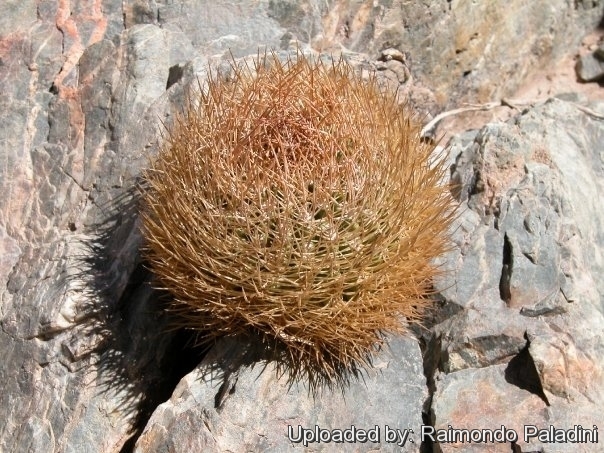
Pyrrhocactus kunzei (Eriosyce kunzei) Photo by: Raimondo Paladini
Growing habit at Balalà, Elqui valley, Coquimbo Region IV, Chile.
Growing habit at Balalà, Elqui valley, Coquimbo Region IV, Chile.
Synonyms:
- Eriosyce kunzei (C.F.Först.) Katt.
- Chilenia kunzei (C.F.Först.) Backeb.
- Echinocactus kunzei C.F.Först.
- Hildmannia kunzei (C.F.Först.) Kreuz. & Buining
- Horridocactus kunzei (Förster) F.Ritter
- Neochilenia kunzei (Förster) Backeb.
- Neochilenia kunzii (C.F.Först.) Backeb. ex Dölz
- Neoporteria kunzei (C.F.Först.) Backeb.
- Neoporteria kunzii (C.F.Först.) Backeb. in Backeb. & F.M.Knuth
- Pyrrhocactus kunzei (C.F.Först.) Borg
- Pyrrhocactus kunzii (C.F.Först.) Borg
See all synonyms of Eriosyce kunzei
back
Accepted name in llifle Database:Eriosyce kunzei (C.F.Först.) Katt.
Eriosyce (Cactac.) gen. revis. & ampl. (Succ. Pl. Res., 1) 117 (1994)
Synonymy: 30
- Eriosyce kunzei (C.F.Först.) Katt.
- Chilenia kunzei (C.F.Först.) Backeb.
- Echinocactus kunzei C.F.Först.
- Hildmannia kunzei (C.F.Först.) Kreuz. & Buining
- Horridocactus kunzei (Förster) F.Ritter
- Neochilenia kunzei (Förster) Backeb.
- Neochilenia kunzii (C.F.Först.) Backeb. ex Dölz
- Neoporteria kunzei (C.F.Först.) Backeb.
- Neoporteria kunzii (C.F.Först.) Backeb. in Backeb. & F.M.Knuth
- Pyrrhocactus kunzei (C.F.Först.) Borg
- Pyrrhocactus kunzii (C.F.Först.) Borg
- Echinocactus geissei Poselg. ex K.Schum.
- Hildmannia geissei (Poselg. ex K.Schum.) Kreuz. & Buining
- Horridocactus geissei (Poselg. ex K.Schum.) Dölz
- Neoporteria curvispina var. geissei (Poselg. ex K.Schum.) Donald & G.D.Rowley
- Echinocactus kunzei var. brevispinosus C.F.Först.
- Echinocactus kunzei var. rigidior Salm-Dyck
- Echinocactus neumannianus Labour.
- Echinocactus supertextus Pfeiff.
- Eriosyce eriosyzoides (F.Ritter) Ferryman
- Horridocactus eriosyzoides F.Ritter
- Neochilenia eriosyzoides (F.Ritter) Backeb.
- Neoporteria eriosyzoides (F.Ritter) Donald & G.D.Rowley
- Pyrrhocactus eriosyzoides (F.Ritter) F.Ritter
- Neochilenia eriosyzoides var. roseiflora Y.Itô
- Neoporteria densispina Y.Itô
- Neoporteria nidus f. densispina (Y.Itô) Donald & G.D.Rowley
- Neoporteria eriosyzoides var. domeykoensis (F.Ritter) Ferryman
- Neoporteria vallenarensis var. domeykoensis (F.Ritter) A.E.Hoffm.
- Pyrrhocactus eriosyzoides var. domeykoensis F.Ritter
Eriosyce kunzei var. transitensis (F.Ritter) Katt.
Eriosyce (Cactac.) gen. revis. & ampl. (Succ. Pl. Res., 1) 118 (1994)
Synonymy: 7
- Eriosyce kunzei var. transitensis (F.Ritter) Katt.
- Eriosyce eriosyzoides var. transitensis (F.Ritter) A.E.Hoffm. & Helmut Walter
- Neochilenia transitensis (F.Ritter) Backeb.
- Neoporteria curvispina var. transitensis (F.Ritter) Donald & G.D.Rowley
- Neoporteria transitensis (F.Ritter) Ferryman
- Neoporteria vallenarensis var. transitensis (F.Ritter) A.E.Hoffm.
- Pyrrhocactus transitensis F.Ritter
back
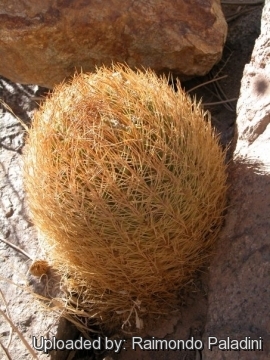
Growing habit at Balalà, Elqui valley, Coquimbo Region IV, Chile. (Eriosyce kunzei) Photo by: Raimondo Paladini
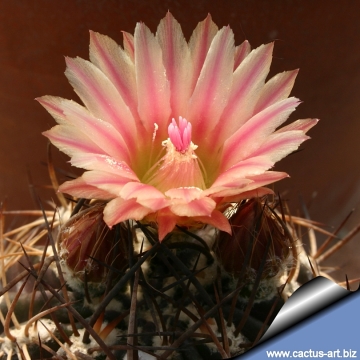
Pyrrhocactus kunzei (Eriosyce kunzei) Photo by: Cactus Art
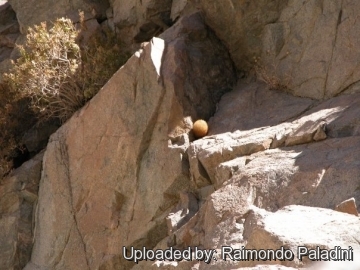
Eriosyce kunzei at Balalà, Elqui valley, Coquimbo Region IV, Chile. (Eriosyce kunzei) Photo by: Raimondo Paladini
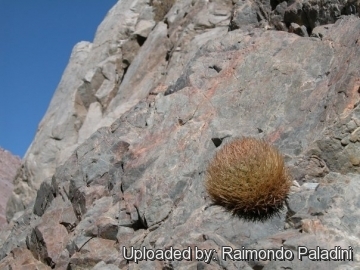
Nested in the rock at at Balalà, Elqui valley, Coquimbo Region IV, Chile. (Eriosyce kunzei) Photo by: Raimondo Paladini
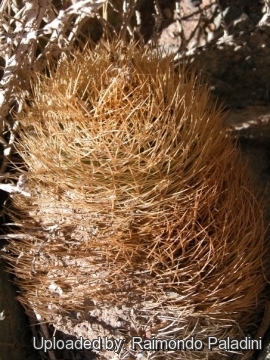
Eriosyce kunzei. Spination. (Eriosyce kunzei) Photo by: Raimondo Paladini
Send a photo of this plant.
The gallery now contains thousands of pictures, however it is possible to do even more. We are, of course, seeking photos of species not yet shown in the gallery but not only that, we are also looking for better pictures than those already present. Read More...
The gallery now contains thousands of pictures, however it is possible to do even more. We are, of course, seeking photos of species not yet shown in the gallery but not only that, we are also looking for better pictures than those already present. Read More...
| Your Actions | |
|---|---|
| Back to Pyrrhocactus index | |
| Back to Cactaceae index | |
 |
Back to Cacti Encyclopedia index |









